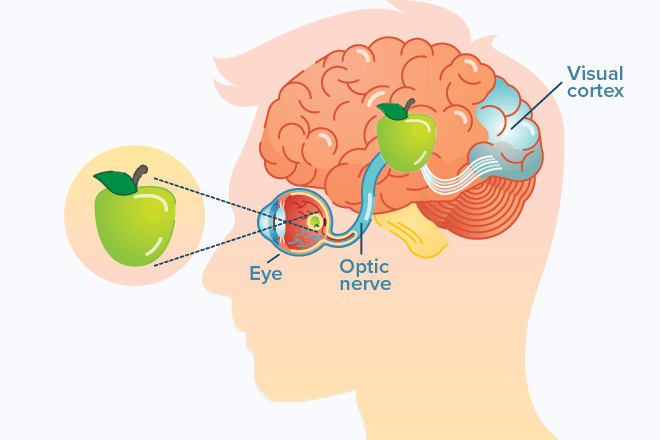Does myopia make you see the world upside down?

Do shortsighted people see the world upside-down?
No, shortsighted (nearsighted) people do not see the world upside-down — and neither do farsighted people. This may be a misunderstanding in how the eyes work, because inverted or upside-down images are involved during the “seeing” process.
How does the visual process work?
The eyes have many important parts that work together with the brain to produce images. These parts include the retina and optic nerve.
The retina lines the back of the eye. Its job is to sense light and send electrical impulses to the optic nerve. The images that the retina captures during this process are initially upside-down.
The optic nerve is a bundle of over a million nerve fibers. It receives all of the gathered information from the retina and then sends it to the brain, where the image is fully processed and turned right-side-up. In the end, the brain translates these messages into what you actually see.
So, while the retina may start out capturing images upside-down, the brain turns them right-side-up to give you a proper view of the world. It just might not be a clear view if you have a refractive error such as myopia. Fortunately, this lack of clarity can be fixed with eyeglasses, contact lenses or laser vision correction!
How we see in 6 steps

1. Light is reflected off objects and travels in a straight line to the eye.
2. Light then passes through the cornea, into the pupil and through the eye’s lens.
3. The lens and cornea bend the light in such a way that the image that lands on the retina is upside-down.
4. The retina’s photoreceptor cells convert the light into electrical signals.
5. Electrical signals are sent to the brain through the optic nerve.
6. When the brain processes these signals, it turns the upside-down image into a right-side-up image.
READ NEXT: Refractive errors and refraction: How the eye sees
Anatomy of the eye. Kellogg Eye Center, University of Michigan Health. Accessed October 2021.
How the eyes work. National Eye Institute. November 2021.
Page published on Wednesday, March 2, 2022
Medically reviewed on Wednesday, February 9, 2022






